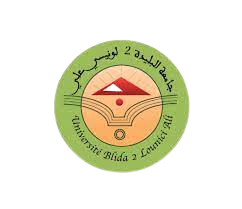References
Allen, I. E., & Seaman, J. (2013). Changing course: Ten years of tracking online education in the United States. Sloan Consortium. Retrieved from http://www.onlinelearningsurvey.com/reports/changingcourse.pdf
Bates, A. W. (2015). Teaching in a digital age: Guidelines for designing teaching and learning. Ton Bates Associates Ltd. Retrieved from https://opentextbc.ca/teachinginadigitalage/
Bielaczyc, K., & Collins, A. (1999). Learning communities in classrooms: A reconceptualizatio educational practice. In Reigeluth, C. M. (Ed.), Instructional-design theories and models: A new paradigm of instructional theory (Vol. 2, pp. 269-
· FluentU Blog. (2023). Language learning on social media: 5 platforms built for learners. Retrieved from https://www.fluentu.com/blog/learn/language-learning-social-network/
- Garrison, D. R., & Vaughan, N. D. (2008). Blended learning in higher education: Framework, principles, and guidelines. Jossey-Bass.
- Hrastinski, S. (2008). Asynchronous and synchronous e-learning. EDUCAUSE Quarterly, 31(4), 51-55. Retrieved from https://er.educause.edu/articles/2008/11/asynchronous-and-synchronous-elearning
- Johnson, L., Adams Becker, S., Estrada, V., & Freeman, A. (2015). NMC Horizon Report: 2015 Higher Education Edition. The New Media Consortium. Retrieved from https://library.educause.edu/resources/2015/2/2015-horizon-report
- Mayer, R. E. (2009). Multimedia learning. Cambridge University Press.
- Olson, J. S., & Olson, G. M. (2014). How to make distance work work. interactions, 21(2), 28-35.
- Paivio, A. (1991). Dual Coding Theory. Harvard University Press.
- Powell, A., Piccoli, G., & Ives, B. (2004). Virtual teams: A review of current literature and directions for future research. ACM SIGMIS Database: The DATABASE for Advances in Information Systems, 35(1), 6-36.
- Richards, J. C., & Rodgers, T. S. (2014). Approaches and methods in language teaching. Cambridge University Press.
- Riemer, K., & Scifleet, P. (2012). eCollaboration: On the nature and emergence of communication and collaboration technologies. Springer Science & Business Media.
- Simanungkalit, J. (2024). Utilizing English TikTok as a media in learning English vocabulary: University students’ perspective. Retrieved from https://www.academia.edu/100511778/Utilizing_English_Tiktok_as_a_Media_in_Learning_English_Vocabulary_University_Students_Perspective
- Social Mention Blog. (2024). The role of social media in online language learning. Retrieved from https://www.socialmention.com/blog/social-media-language-learning/
- Zourou, K. (2012). On the attractiveness of social media for language learning: A look at the state of the art. ALLESIC, 15(1), 2436. Retrieved from https://journals.openedition.org/alsic/2436

